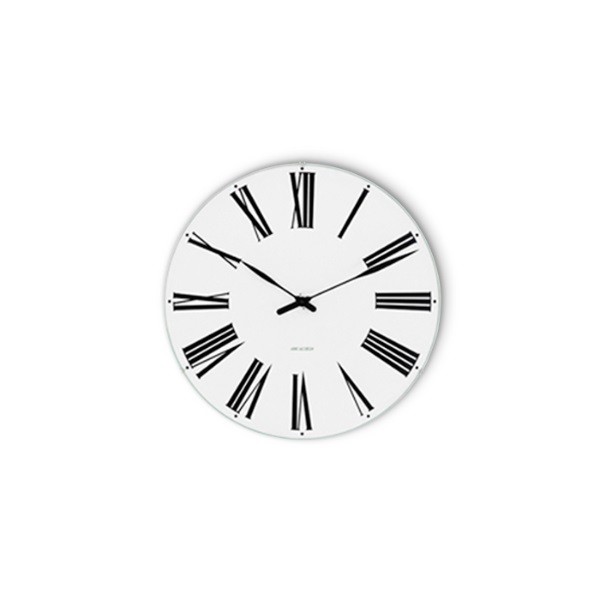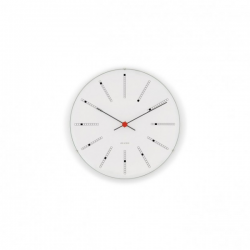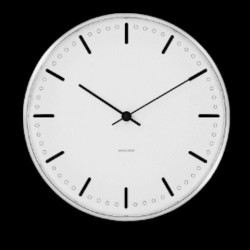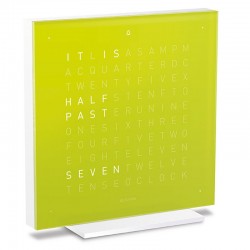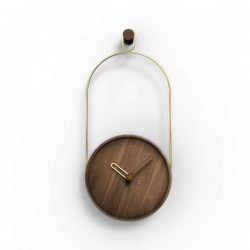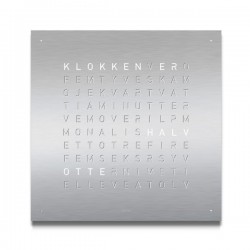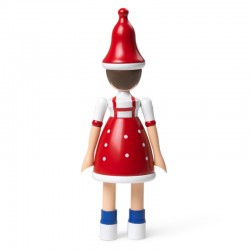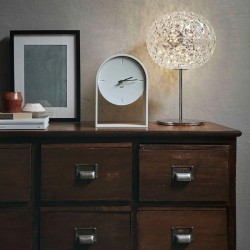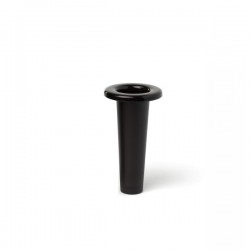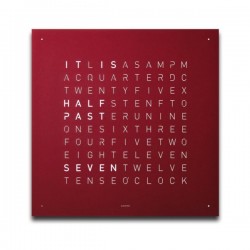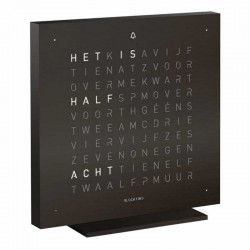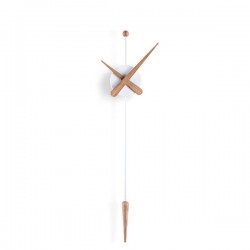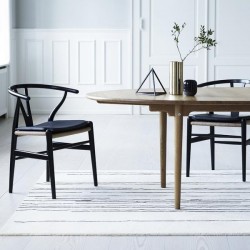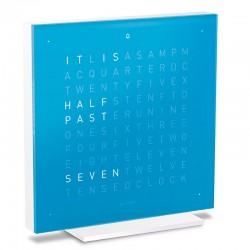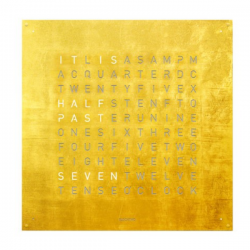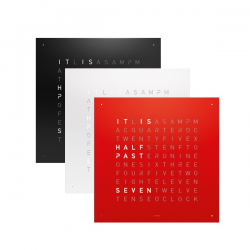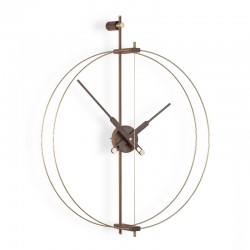When Arne Jacobsen designed the Roman Clock for Aarhus Town Hall in 1942, he also created a design icon for the home.
This wall clock is available in four sizes, and its current design is faithful to the original drawings.
With its diameter of 16 cm, this clock is the smallest in the range.
The clock case supporting the concave glass front gives the clock an appearance of hovering on the wall.
A great gift idea for weddings, anniversaries, birthdays, school leavers and other special occasions.
- Specifications
Material Information
Aluminum and glass- Size Description
Size Information
Diameter 16 cm (6.3")
Diameter 21 cm (8.3")
Diameter 29 cm (11.4")
Diameter 48 cm (18.9")
-
Arne Jacobsen
<p>Arne Jacobsen (1902-1971) was trained as a bricklayer and graduated from The Technical Society's school in 1924 and Copenhagen Art Academy 1927. In 1928 he received the Academy's gold medal, but prior to this, when only 23, he was awarded a silver medal at the 1925 Paris World Exhibition - the first of numerous honours that became a natural accompaniment to his artistic activities, his untiring search and his brilliant conceptions, made manifest by many successes in competitions at home and abroad. His main works include: town halls in ?rhus, Søllerød, Rødovre and Glostrup, SAS-building (Royal Hotel) in Copenhagen, Munkegårds School in Gentofte, Toms Chocolate Factory in Ballerup, The Danish National Bank headquarters, a sports hall in Landskrona, St. Catherine's College, Oxford and Hamburgerische Elektrizitätswerke's administration building. In 1932, Arne Jacobsen began collaboration with Fritz Hansens Eft. A/S, and over a period of years designed a series of chairs which are now recognised as milestones in the development of modern furniture. They include "The Ant" (1951), "The Egg" (1957), and "The Swann"(1957). But he was also an innovator in other design fields, such as the tableware series "Cylinda-line" in stainless steel. Arne Jacobsen was a professor at the Art Academy, and received honorary doctorates from a number of foreign universities and academies. Cylinda-line was awarded the ID-prize 1967 by The Danish Society of Industrial Design and The International Design Award 1968 by The American Institute of Interior Designers.</p>
こちらの商品もお好みかもしれません
価格
€175.99
Rosendahl City Hall Clock
価格
€198.31
Related products
Qlocktwo Touch Pure Lime Juice (Green)
価格
€413.22
Nomon Eslabón Walnut Clock
価格
€570.00
Qlocktwo Classic Stainless Steel
価格
€1,429.75
-50%
Kay Bojesen Christmas Lise Red/Blue/white
ベース価格
€74.34
価格
€37.18
Kartell Air Du Temps Desk Clock
価格
€119.83
-50%
Alessi Happy Eternity Cagnottone Ornament
ベース価格
€18.18
価格
€9.09
-40%
Magis Bouquet Black Insert
ベース価格
€7.50
価格
€4.50
Qlocktwo Classic Red Velvet
価格
€1,586.78
Qlocktwo Touch Black Metal
価格
€822.31

Qlocktwo Touch Pure Red Cherry Acrylic
価格
€413.22
Nomon Punta Clock
価格
€110.00
-30%
Carl Hansen & Søn CH24 Wishbone Cushion, Loke 7150
ベース価格
€109.00
価格
€76.30
Qlocktwo Touch Pure Blue Candy
価格
€413.22
Qlocktwo Creator's Edition Gold
価格
€3,008.26
Nomon Mini Barcelona Premium Clock
価格
€790.00


 EUR
EUR


